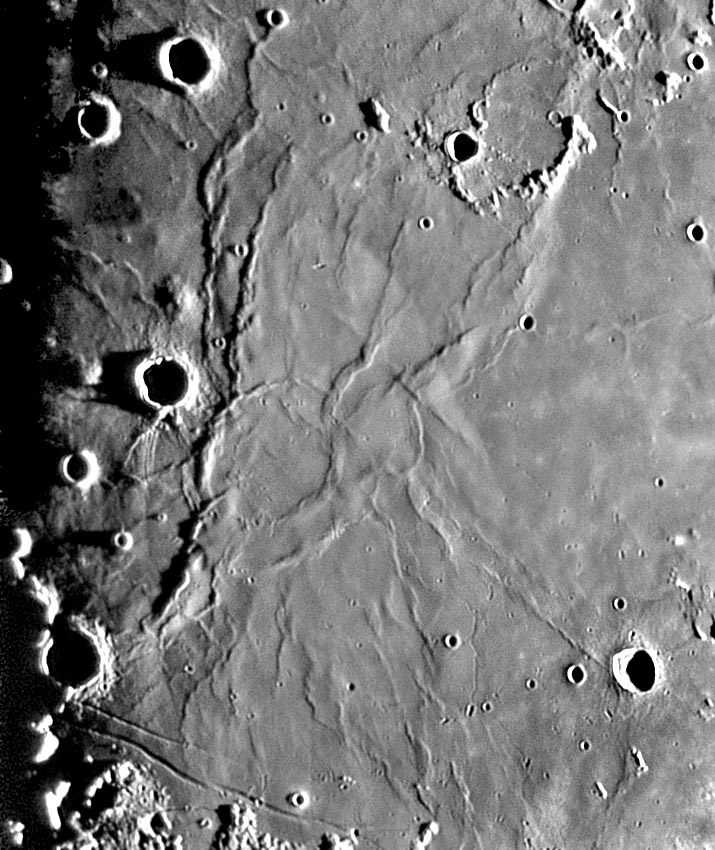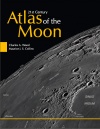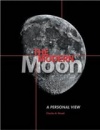|
|
| Line 1: |
Line 1: |
| | __NOTOC__ | | __NOTOC__ |
| − | =Cherubs in the Corners= | + | =How Can You Be Tranquil When So Much is Happening?= |
| − | Originally published May 21, 2006 | + | Originally published May 19, 2006 |
| | <!-- Start of content --> | | <!-- Start of content --> |
| − | <div class="post" id="post-284"> | + | <div class="post" id="post-285"> |
| | | | |
| | <div class="storycontent"> | | <div class="storycontent"> |
| − | <p>[[File:Hevelius-LOC.jpg|Hevelius-LOC]]<br /> | + | <p>[[File:Lamont-Grenier-LPOD.jpg|Lamont-Grenier]]<br /> |
| − | <em>image from [http://www.loc.gov/exhibits/bnf/bnf0005.html US Library of Congress ]</em></p> | + | <em>image by [mailto:jeromegrenier@free.fr Jérôme Grenier]</em></p> |
| − | <p>Perhaps the lunar seas are water if they are colored blue. And does the yellow-green mean the highlands are cheese? In fact, I didn’t know that the Hevelius map was colored. The only previous copy I had seen was uncolored. But then I discovered that Hevelius’ great 1647 book <i>Selenographia</i> contained three maps! The one shown on a previous [[May_9,_2005|LPOD]] is not the same map as this one. This apparently is the third chart which shows shadows in all the craters. It also illustrates the beauty of ancient maps - and how often the oldest ones were stylized in their depiction of craters. Plato, Copernicus, Kepler, Tycho, Ptolemaeus and a number of others are recognizable by their locations, but they are all drawn nearly the same. Many of the other craters, especially the small crater chains in the highlands, seem to be more representational than real. I especially like the 6-pack between Tycho and the south pole. But Hevelius used a 50 ft long telescope with only 50 power and no clock drive! We would probably do no better with such equipment. It wasn’t until 1749 that a significantly more accurate (but less attractive) map was drawn by Tobias Mayer using a telescope of only 1.4″ aperture! By the way, when was the last time you saw a cherub on a lunar chart? </p> | + | <p>Where to begin? Western Tranquillitatis is such a feature-rich area of the Moon, and Jérôme’s image is so magnificent, that many, many wonderous objects are visible. Middle-left is the concentric mare ridges named Lamont - perhaps a buried two-ring impact basin. Just northwest of Lamont is shadow-filled Arago crater with its two rugged domes, Alpha above and Beta to the left. Northwest of Alpha is a line of three smaller domes (partly obscured by a dark defect), and northeast is a beautifully domey mound. Rilles and rille-like features abound. The famous [[February_12,_2006|Diamondback Rille]] winds through the bottom right corner, a closely-spaced crater chain is about 60 km (2.5 Arago diameters) north of the rille, and another straight crater-chain(?) rille extends to the southeast from near Carrel (top right). The last two features are parallel to each other and to at least three mare ridges between Lamont and Maskelyne (near bottom right). These five linear features are roughly radial to Imbrium, but I am not certain that it is Imbrium that structurally controls their locations and orientations. What a wonderful area!</p> |
| | <p>[mailto:tychocrater@yahoo.com Chuck Wood]</p> | | <p>[mailto:tychocrater@yahoo.com Chuck Wood]</p> |
| − | <p><b>Technical Details:</b><br /> | + | <p><strong>Technical Details:</strong><br /> |
| − | none</p>
| + | 3 May 2006. Meade SC 8″(!) + Atik NB + red filter 23a + barlow 2x. mosaic of 6 images.<br /> |
| − | <p><b>Related Links:</b><br /> | + | The image above is one I have starkly enhanced to better show the delicate mare features - [http://astrosurf.com/grenier/astro/lamont.jpg here] is Jerome’s original version.</p> |
| − | [http://www.adlerplanetarium.org/learn/history/astronomers/hevelius01.ssi Johannes Hevelius (1611-1687)]</p> | + | <p><strong>Related Links:</strong><br /> |
| − | <p><b>Yesterday's LPOD:</b> [[September 30, 2025|An Elusive Phase]] </p> | + | Rükl chart 35<br /> |
| − | <p><b>Tomorrow's LPOD:</b> [[October 2, 2025|Domes, Domes Everywhere]] </p> | + | [http://astrosurf.com/grenier Jérôme’s website]<br /> |
| | + | [http://www.lpi.usra.edu/resources/mapcatalog/LAC/lac60/ Topo map of area]<br /> |
| | + | [http://www.lpod.org/coppermine/displayimage.php?album=28&pos=52 Clementine mosaic]</p> |
| | + | <p><b>Yesterday's LPOD:</b> [[September 30, 2025|Bird's Feet and Droppings?]] </p> |
| | + | <p><b>Tomorrow's LPOD:</b> [[October 2, 2025|An Elusive Phase]] </p> |
| | </div> | | </div> |
| | <p> </p> | | <p> </p> |




